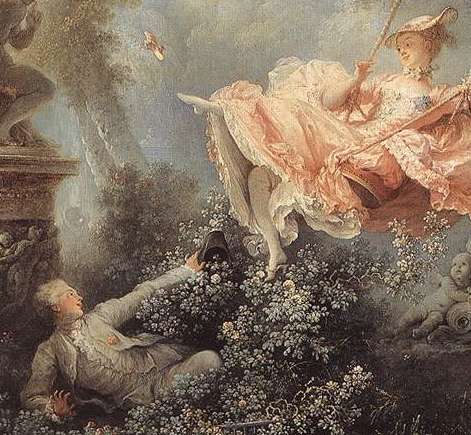Fragonard’s The Swing

As with most Rococo paintings, the subject of Fragonard’s The Swing is not very complicated! Two lovers have conspired to get this older fellow to push the young lady in the swing while her lover hides in the bushes. Their idea is that as she goes up in the swing, she can part her legs, and he can get a perfect view up her skirt.
They are surrounded by a lush, overgrown garden. A sculptured figure to the left puts his fingers to his mouth, as though saying “hush,” while another sculpture in the background has two cupid figures cuddled together. The colors are pastel—pale pinks and greens, and although we have a sense of movement and a prominent diagonal line—the painting lacks all of the seriousness of a baroque painting.

If you look really closely you can see the loose brushstrokes in the pink silk dress, and as she opens her legs, we get a glimpse of her garter belt. It was precisely this kind of painting that the philosophers of the Enlightenment were soon to condemn. They demanded a new style of art, one that showed an example of moral behavior, of human beings at their most noble.
